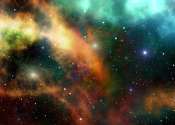Alpha-rich 'young' stars are actually not young
The alpha-rich giant stars with theoretical young ages have been treated as an abnormal population, since they cannot be understood in the canonical scheme of the Galactic chemical evolution.

The alpha-rich giant stars with theoretical young ages have been treated as an abnormal population, since they cannot be understood in the canonical scheme of the Galactic chemical evolution.
Astronomy
Jan 21, 2022
1
144

Astronomers at the University of Hawaiʻi Institute for Astronomy (IfA) are part of a team that recently discovered three planets orbiting dangerously close to stars nearing the ends of their lives.
Astronomy
Jan 13, 2022
0
243

An international team of astronomers reports the detection of four new giant alien worlds as part of the HATSouth photometric survey. The newfound exoplanets are the size of Jupiter and received designations HATS-74Ab, HATS-75b, ...

Astronomers have a new tool to help them understand giant stars. It's a detailed study of the precise temperatures and sizes of 191 giant stars. The authors of the work say that it'll serve as a standard reference on giant ...
Astronomy
Dec 8, 2021
0
130

Based on LAMOST and Kepler data, a new study led by astronomers from National Astronomical Observatories of Chinese Academy of Sciences (NAOC) has revealed evolutionary features of lithium for evolved stars, which updates ...
Astronomy
Nov 24, 2021
0
166

UCLA astronomers have identified 366 new exoplanets, thanks in large part to an algorithm developed by a UCLA postdoctoral scholar. Among their most noteworthy findings is a planetary system that comprises a star and at least ...
Astronomy
Nov 23, 2021
0
454

This image shows knots of cold, dense interstellar gas where new stars are forming. These Free-floating Evaporating Gaseous Globules (frEGGs) were first seen in Hubble's famous 1995 image of the Eagle Nebula. Because these ...
Astronomy
Nov 9, 2021
0
46

Hot Jupiters—giant gas planets that race around their host stars in extremely tight orbits—have become a little bit less mysterious thanks to a new study combining theoretical modeling with observations by the Hubble ...
Astronomy
Oct 21, 2021
0
224

Using NASA's Transiting Exoplanet Survey Satellite (TESS), astronomers have discovered a new inflated, low-density "hot Jupiter" exoplanet. The newly found alien world, designated TIC 257060897b, is about 50 percent larger ...

UNLV researchers and colleagues may have identified the first known planet to orbit three stars.
Astronomy
Oct 2, 2021
4
7149